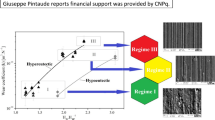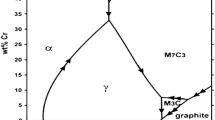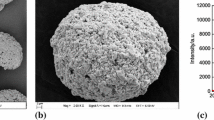Abstract
The effects of temperature and sliding distance on the metal-to-metal wear behavior of austenitic Fe-20Cr-1.7C-1Si hardfacing alloy were investigated in air in the temperature range from 25 to 450 °C. The applied contact stress was 55 MPa and the maximum sliding distance was 18 m. In the temperature range from 25 to 200 °C, the weight loss increased linearly with increasing sliding distance. The weight loss increased parabolically with increasing sliding distance up to 18 m at 300 °C, but at 450 °C, the weight loss drastically increased from the beginning of the wear test and became almost saturated above a sliding distance of 3.6 m. The initial friction coefficient was not changed with temperature up to 300 °C. However, at 450 °C, the initial friction coefficient increased abruptly. It was thought to be due to the increasing tendency of adhesive bonding to occur between the two self-mating specimens. At temperatures below 200 °C, the steady state friction coefficient did not change significantly. Above 300 °C, the steady state friction coefficient decreased due to the oxide layers that formed on the worn surfaces during wear.










Similar content being viewed by others
References
H. Ocken, EPRI TR-103296 3 (1993)
K.C. Antony, J. Metals. 35 (1983) 52
H. Ocken, Nuclear. Tech. 68 (1985) 18
E.K. Ohriner T. Wada E.P. Whelan H. Ocken, (1991), Metall. Trans. 22A 983
J. Vikstrom, Wear 179 (1994)143
H. Ocken, Surf. Coating. Tech. 76(1995) 456
K.Y. Lee S.H. Lee, Y. Kim, H.S. Hong, Y.M. Oh and S.J. Kim, Wear 255 (2003) 481
ASTM strandard E975–03, ASTM (2003) 741
A.K. De, D.C. Murdock, M.C. Maytaya, J.G. Speer and D.K. Matlock, Scripta Mater. 50 (2004) 1445
Mohamed Youssef Sherif, Strain-induced transformation of very strong metal, Master thesis (University. of Cambridge, 2003)
I.M. Hutchings, Tribology: friction and wear of engineering materials (Butterworth-Heinemann, 1992) 94
J. Jiang, F.H. Stott and M.M. Stack, Wear 181–183 (1995) 20
J. Jiang, F.H. Stott and M.M. Stack, Wear 256 (2004) 973
H. So, Wear 184 (1995) 161
I.M Hutchings, (1992), Tribology friction and wear of engineering materials, Butterworth-Heinemann 25
M. Yanmamoto K. Nakajima, (1981) Wear 70:321
Acknowledgements
This work was supported by the SRC/ERC program of Most/Kosef (R11–2000–067–01–002–0).
Author information
Authors and Affiliations
Corresponding author
Rights and permissions
About this article
Cite this article
Lee, Ky., Ko, K.H., Kim, J.H. et al. Effects of temperature and sliding distance on the wear behavior of austenitic Fe-Cr-C-Si hardfacing alloy. Tribol Lett 26, 131–135 (2007). https://doi.org/10.1007/s11249-006-9170-0
Received:
Accepted:
Published:
Issue Date:
DOI: https://doi.org/10.1007/s11249-006-9170-0




